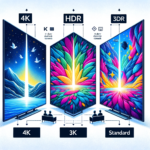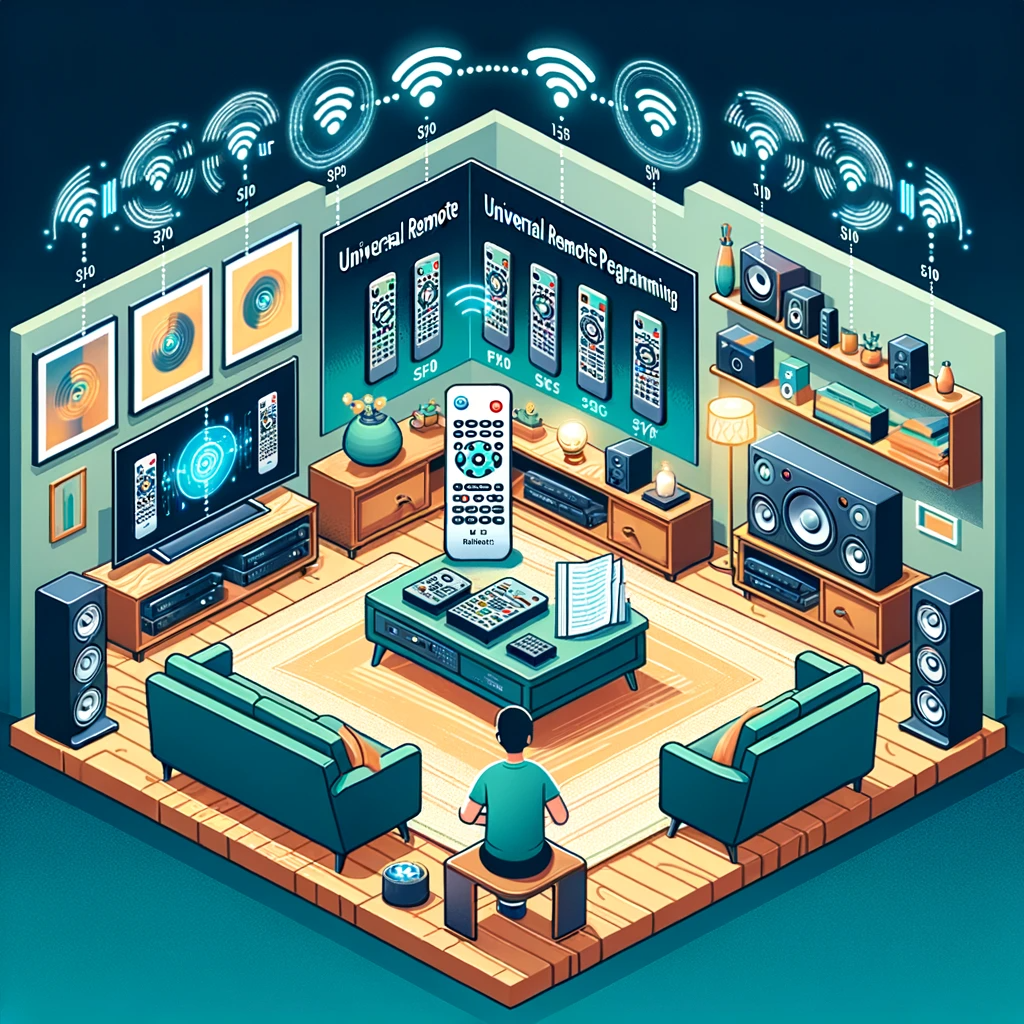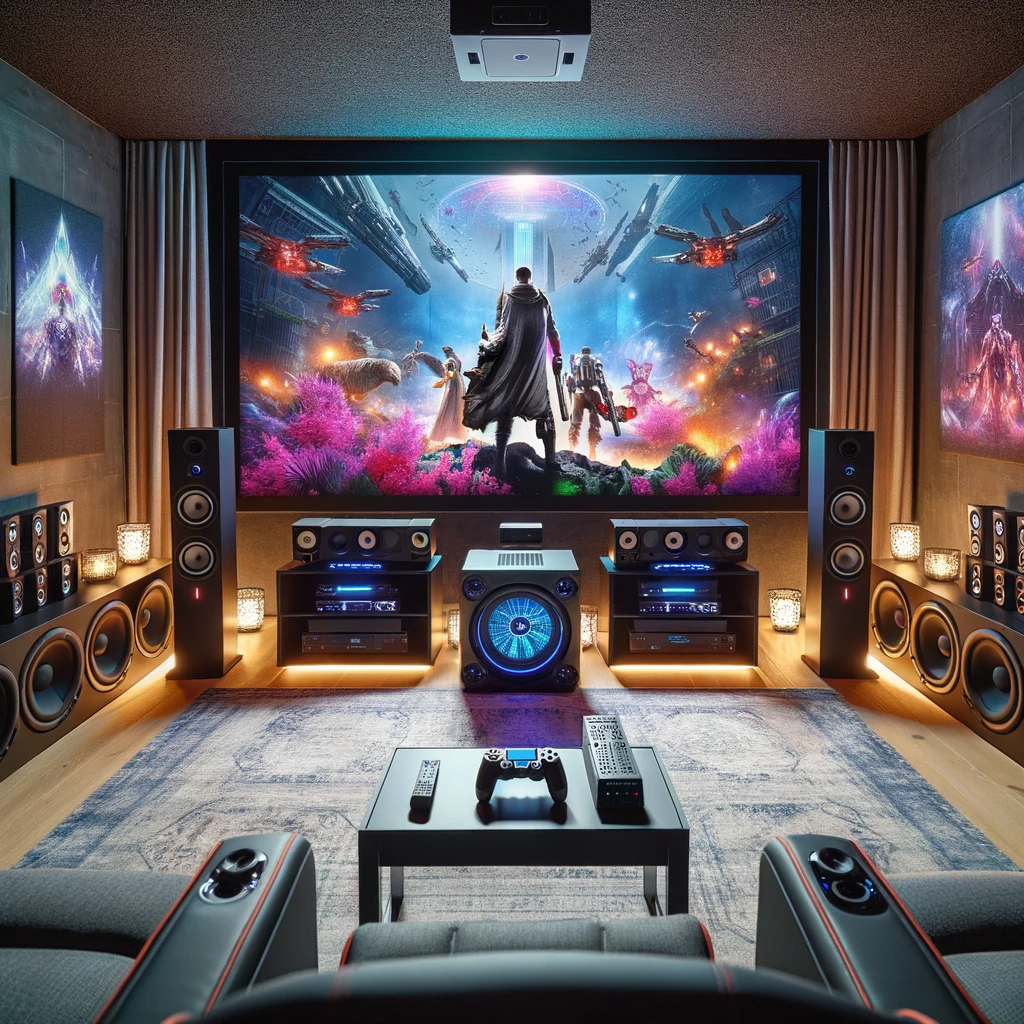Introduction
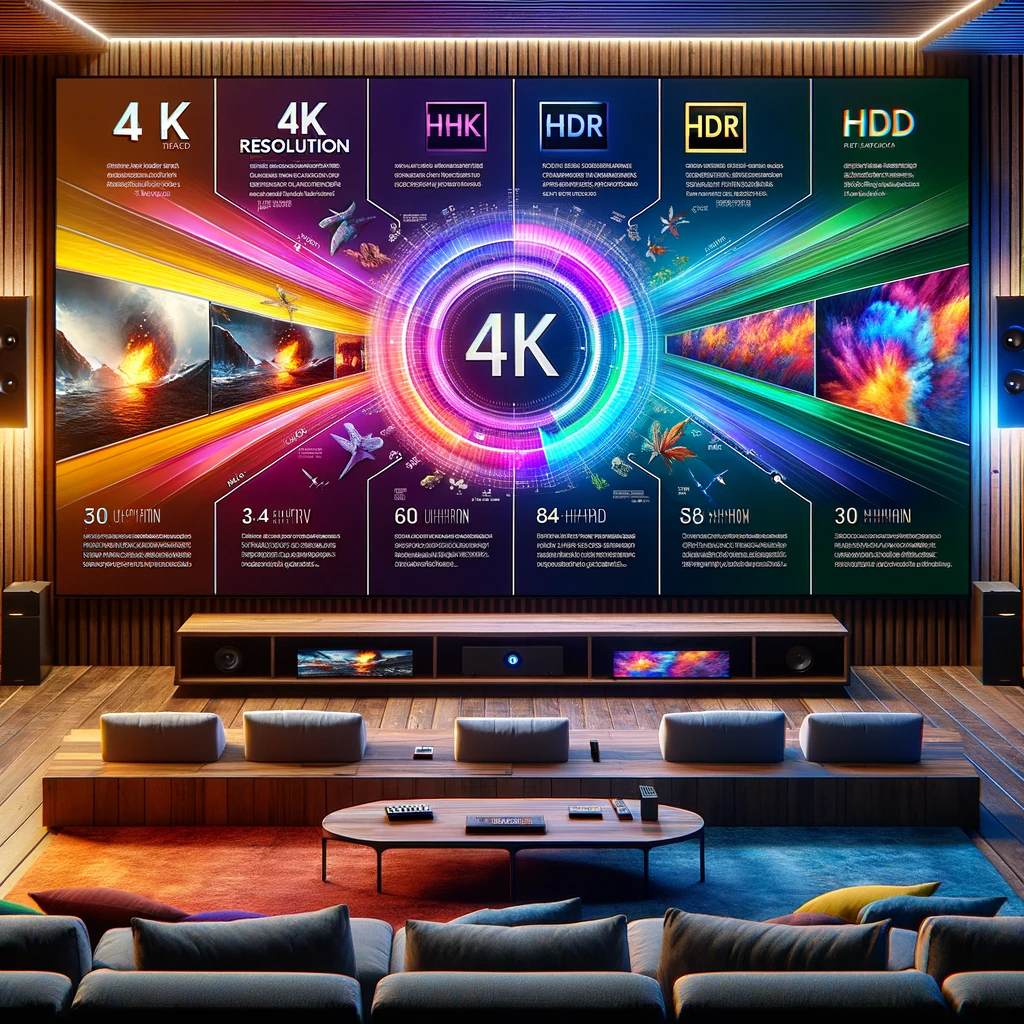
The Era of High-Quality Video: Exploring 4K, HDR, and Video Standards
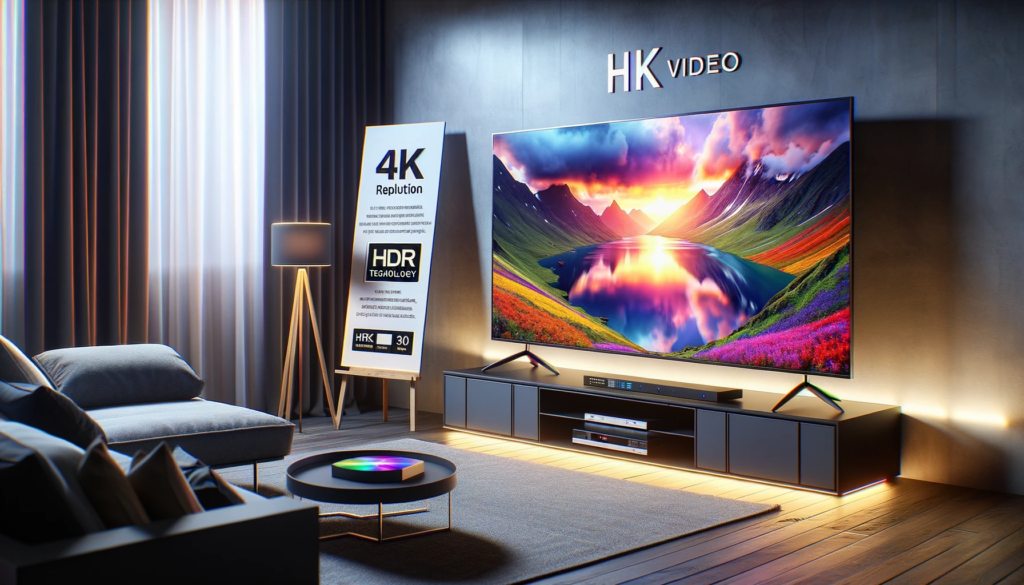
The world of video has rapidly evolved, bringing us breathtaking visual experiences. In this era of high-quality video, it is crucial to understand the concepts behind 4K resolution, HDR technology, and video standards. This introductory section will provide a concise overview of these topics.
Definition of 4K Resolution
4K resolution refers to a display’s ability to showcase content with approximately 4000 pixels horizontally. It offers four times the number of pixels found in Full HD (1080p), resulting in enhanced clarity and sharpness. This display technology allows for more detailed images and crisper text, making it ideal for large screens or close viewing distances.
Explanation of HDR Technology
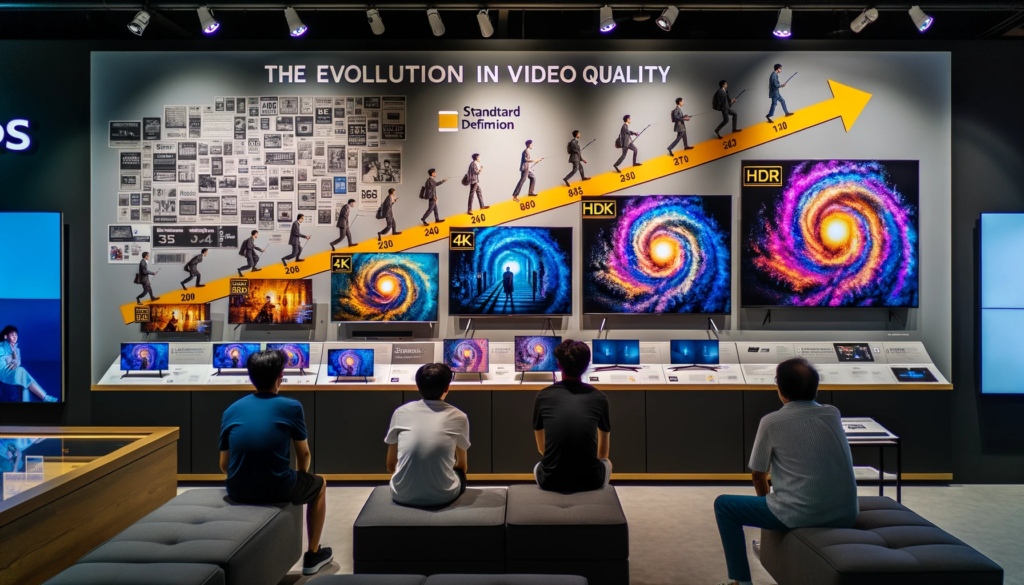
HDR (High Dynamic Range) technology revolutionizes how we perceive visual content. It enhances the dynamic range by expanding contrast ratios and color accuracy beyond what traditional displays can achieve. By accentuating both bright highlights and dark shadows simultaneously, HDR produces a more vibrant and realistic image.
Overview of Video Standards
Video standards play a vital role in defining the specifications that ensure compatibility between different devices and media formats. These standards dictate aspects such as resolution, color space, frame rate, and more.
Understanding video standards is crucial for ensuring seamless playback across various platforms and devices. Stay tuned as we dive deeper into these topics to explore their evolution, advantages, challenges posed by streaming services in delivering high-quality content while maintaining compatibility with existing video standards.
Understanding 4K Resolution
Definition and history of 4K resolution:
- 4K resolution refers to a display or content with a horizontal pixel count of approximately 4000 pixels.
- It originated in the early 2000s as a response to the growing demand for higher image quality in digital media.
Comparison with other resolutions (e.g., HD, Full HD):
- Compared to HD (High Definition) resolution, which typically has a pixel count of around 1920×1080, 4K offers four times the number of pixels, resulting in much greater detail and clarity.
- Similarly, compared to Full HD, which is still widely used today, 4K boasts twice the vertical and horizontal pixel count.
Benefits and drawbacks of 4K resolution:
- Benefits: The increased pixel density in 4K displays allows for sharper images with finer details. It provides enhanced clarity in both close-up shots and wide-angle scenes.
Additionally, it offers improved color reproduction and smoother gradients.
Drawbacks: One drawback is that watching native 4K content requires compatible devices and media sources.
Another consideration is that higher resolutions require more processing power and storage space. Additionally, there may be challenges when upscaling lower-resolution content to fit a larger screen as it can result in loss of sharpness or artifacts.
A Glimpse into the Future
Exploring upcoming advancements in display technologies:
- As technology continues to advance rapidly, we can anticipate even higher resolutions beyond 4K being introduced in the future.
- These advancements might include technologies such as “8K” or “12K,” which would offer even more stunning levels of detail than what’s currently available.
Potential applications for future high-resolution displays:
- Industries such as healthcare can benefit from ultra-high-resolution displays for accurate medical imaging diagnostics.
- The entertainment industry can utilize higher resolutions to create more immersive virtual reality experiences.
- Gaming enthusiasts can enjoy more realistic and immersive gameplay with lifelike graphics on high-resolution displays. Embracing the evolution:
- While 4K resolution is currently the standard for high-quality content, advancements in technology will continue to push the boundaries of visual fidelity.
As these new resolutions become more accessible, they will undoubtedly redefine our perception of visual media and elevate our viewing experiences to unprecedented levels.
Exploring HDR Technology
Definition and evolution of HDR (High Dynamic Range)
HDR, or High Dynamic Range, refers to a technology that enhances the visual experience by widening the range between the darkest and brightest parts of an image. It allows for more accurate reproduction of colors, greater contrast ratios, and improved brightness levels. The development of HDR technology has revolutionized the way we perceive and consume visual content.
How HDR enhances the viewing experience
HDR technology significantly improves the viewing experience by delivering stunning image quality with lifelike details. One way it achieves this is through increased contrast ratio, which means there is a greater difference between the darkest blacks and brightest whites in an image.
This results in images that appear more realistic and immersive. Moreover, HDR enhances color accuracy by expanding the color gamut beyond what traditional displays can achieve.
This wider range of colors creates more vibrant and lifelike images that are closer to what our eyes see in reality. Additionally, HDR provides improved brightness levels, allowing for highlights to be displayed with greater intensity while preserving detail in both bright and dark areas simultaneously.
This eliminates instances where details may have been lost due to overexposure or underexposure. Overall, HDR technology elevates the viewing experience by delivering richer colors, sharper contrasts, and enhanced brightness levels – all contributing to a more captivating visual presentation.
Overview of Video Standards Throughout History
Standard Definition (SD) – PAL/NTSC systems. High Definition (HD) – 720p, 1080i/p; Blu-ray emergence. Ultra High Definition (UHD) – Introduction of 4K resolution.
The Evolution of Standard Definition
SD video standards were initially developed to support analog television systems. PAL (Phase Alternating Line) and NTSC (National Television System Committee) were the two main SD formats used worldwide.
PAL was primarily used in Europe, Asia, and Oceania, while NTSC was prevalent in North America and parts of South America. These systems offered a resolution of around 480 vertical lines and an aspect ratio of 4:3.
The Rise of High Definition
With the demand for higher-quality visuals, the industry shifted towards High Definition (HD). HD video standards introduced resolutions such as 720p (progressive scan) and 1080i/p (interlaced/progressive scan).
This improvement meant sharper images with increased detail and clarity. The emergence of Blu-ray technology further enhanced HD content delivery through optical discs.
The Introduction of Ultra High Definition
The next major leap in video standards came with the introduction of Ultra High Definition (UHD), also known as 4K resolution. UHD brought about a significant increase in image quality by quadrupling the number of pixels compared to Full HD. This resulted in more detailed visuals with greater sharpness and clarity on compatible screens.
UHD-1 Phase I: Rec2020 Color Space & BT2020 Standard
To enhance color reproduction capabilities, UHD-1 Phase I introduced the Rec2020 color space standard, expanding the range beyond what was possible with HD. Additionally, BT2020 became the recommended standard for Ultra HD content, ensuring compatibility across devices.
UHD-1 Phase II: Rec2100 PQ & HLG Transfer Functions
In UHD-1 Phase II, new transfer functions were introduced to improve the dynamic range of HDR content. The Perceptual Quantizer (PQ) and Hybrid Log-Gamma (HLG) transfer functions allowed for a more realistic representation of brightness levels and contrast in HDR-enabled displays.
UHD-2: Potential Future Enhancements
While UHD-2 is still in the realm of possibilities, it represents potential future enhancements beyond current UHD standards. These enhancements may include advancements in resolution, color reproduction, frame rates, and overall visual quality. As technology evolves, we can anticipate further improvements that push the boundaries of video standards.
The Impact of Streaming Services on Video Standards
Streaming Platforms’ Adoption of Higher Resolutions & HDR Support
Streaming platforms have recognized the demand for high-quality video content and have swiftly adapted to support higher resolutions and HDR. These platforms, such as Netflix and Amazon Prime Video, now offer a wide range of content in 4K resolution, allowing viewers to experience stunning visuals with enhanced detail and clarity.
Furthermore, these streaming services have also embraced HDR technology, delivering a more immersive viewing experience by providing increased contrast ratio, vibrant colors, and improved brightness levels. This adoption of higher resolutions and HDR support by streaming platforms has elevated the overall quality of content available to audiences worldwide.
Advantages & Challenges Faced by Streaming Services in Delivering High-Quality Content
The advantages of streaming services delivering high-quality content are numerous. Firstly, viewers can enjoy their favorite movies and shows in exceptional detail from the comfort of their own homes without having to invest in expensive physical media or equipment. Additionally, streaming services allow for convenient access to a vast library of titles that can be easily streamed on various devices.
However, there are challenges that streaming services face when it comes to delivering such high-quality content. One significant challenge is the need for robust internet infrastructure to support the bandwidth requirements of 4K streaming and HDR playback consistently.
Furthermore, ensuring compatibility across different devices and optimizing video compression algorithms while maintaining quality standards poses additional hurdles. Nonetheless, with technological advancements and continuous improvements in delivery systems, streaming services are constantly striving to overcome these challenges.
The Role of HDMI in Supporting High-Quality Video
HDMI Versions Supporting Various Resolutions & Features
HDMI (High-Definition Multimedia Interface) plays a crucial role in supporting high-quality video transmission between devices. Over time, HDMI versions have evolved alongside advancements in video standards.
HDMI 1.4 introduced support for 4K resolution at 30Hz, while HDMI 2.0 expanded the capabilities to enable 4K resolution at higher refresh rates up to 60Hz. Furthermore, HDMI 2.0a introduced HDR support, allowing devices to transmit HDR content with enhanced color and contrast information.
The latest HDMI version, HDMI 2.1, offers even more significant improvements by supporting higher resolutions like 8K and enabling features such as Variable Refresh Rate (VRR) and eARC (enhanced Audio Return Channel). These advancements ensure that high-quality video can be seamlessly transmitted between devices while maintaining fidelity.
Conclusion
As streaming services continue to adopt higher resolutions and embrace HDR technology, viewers can indulge in an ever-improving cinematic experience from the comfort of their own homes.
The convenience and accessibility provided by streaming platforms contribute to the democratization of high-quality video content, making it accessible to a wider audience worldwide.
With the continuous evolution of video standards supported by platforms and technologies like HDMI, the future holds immense potential for even more immersive and visually stunning experiences in the world of streaming entertainment.





